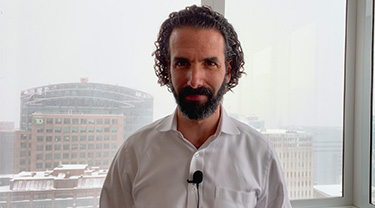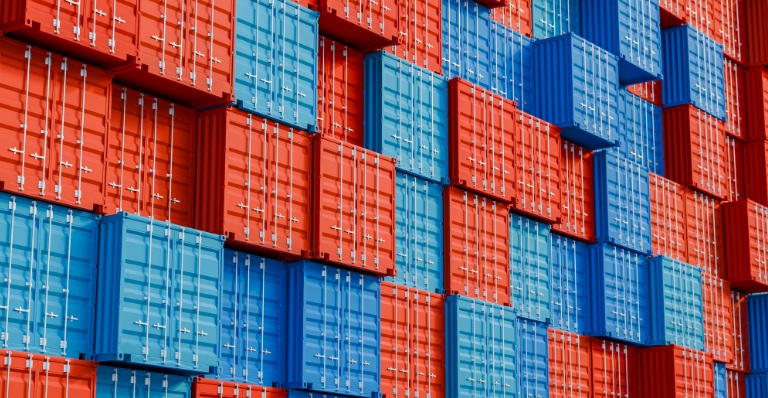Winter driving isn’t for the faint of heart. White knuckling your way through blustery conditions, across ice, slush and snow-covered roads is an all-too-familiar feature of Canadian life.
The global economy came careening into 2022 having navigated a series of peaks, valleys and blind curves. As the world emerged from a global pandemic, a policy-induced demand surge ran up against a flurry of supply chain disruptions, yielding inflation not seen in 40 years. Risk of overheating forced central banks to slam on the breaks, in a sequence of frequent and sharp interest rate hikes. Higher prices at the pumps and in grocery stores led consumers in Canada and the United States to draw down on excess reserves and rely on the continued strength of labour markets to help power them forward. In our winter Global Economic Outlook, EDC Economics expects the U.S. and Canadian economies to have accelerated by 1.8% and 3.4%, respectively, in 2022.
Both economies appear to now be moving into the right lane. As job and income growth let up, the reserve tank approaches empty, and the negative wealth effects of lower asset prices become a headwind, it’s only a matter of time before higher prices and interest rates take their toll. We expect Canadian growth to decelerate to just 0.2% in 2023, thanks to weaker commodity prices, softness in the housing market and elevated levels of consumer indebtedness. The U.S. economy won’t fare much better, clocking growth of only 0.4%.
After a year of supersized interest rate increases in both Canada and the U.S., that saw rates turbocharged by 4%, we expect both central banks to downshift early in the year before letting up completely for most of 2023. As monthly inflation falls closer to target, and growth eases, monetary authorities will likely consider a policy U-turn toward the end of 2023 and into 2024. But far from going into cruise-control, authorities will keep close watch of dashboard indicators and remain vigilant against the impacts of wage increases and any return of pricing pressures.
While the outlook for North America may have crested moving into 2023, Europe appears to have pulled over completely. In response to Russia’s war on Ukraine, European economies are now managing a ban on Russian pipeline gas and sanctions on seaborn Russian crude, agriculture and fertilizer supplies. This has deprived the continent of the resources needed to lubricate its industrial engine and fuelled the runup in consumer prices.
You should also check out
With growing risks, Canadian companies face new challenges. EDC’s Global Economic Outlook offers insights to help you make better business decisions.
As supply chains are rerouted, Germany and the region’s other industrial centres will need to repair any resulting dents to their manufacturing capabilities in order to avoid permanent damage. At the same time, the region faces a fragile couple of winters, where inclement weather could exhaust its limited energy supplies, sending prices soaring and potentially smashing economic activity. While we expect Euro Area growth to slow to 0.1% in 2023, the outlook for Germany is more negative (-0.8%), due to its dependance on Russian natural gas.
With Europe’s economy facing more hazardous road conditions ahead, the European Central Bank (ECB) will need both a foot on the gas and on the brake. We expect the ECB’s policy rate to peak at a lower level than its peers in Q2 2023, and officials to start shrinking the $7.25 trillion-(€5 trillion) worth of bonds acquired over the past eight years, while keeping a close eye on growth and financial stability.
The Chinese government will try to jumpstart its economy, helping growth overtake the 5% threshold in 2023, albeit moderately so. A complete reopening of the Chinese economy remains an upside risk to our forecast at this point. Other developing markets, meanwhile, will continue to be weighed down by the cost of food and fuel, simmering social tensions and deteriorated debt dynamics, in the context of a tighter global credit environment.
The bottom line?
The global economy faces a challenging journey. While a global recession and deep economic contraction aren’t in our base-case forecast, some individual countries will fall into recession and others will barely scrape the surface. Treacherous roads and whiteout conditions will make for slow driving and limited visibility of the hazards ahead.
EDC Economics expects the global economy to grow by just 2.3% this year, its slowest pace since the global financial crisis, with the exception of 2020. Slowing global demand and increased volatility will require Canadian exporters to tune up their risk management systems and stay alert. But those who are well prepared will lead the pack to the open roads that lie ahead.
This week, a very special thanks to Ross Prusakowski, director of our Economic and Political Intelligence Centre.
As always, at EDC Economics, we value your feedback. If you have ideas for topics that you would like us to explore, please email us at economics@edc.ca and we’ll do our best to cover them.
This commentary is presented for informational purposes only. It’s not intended to be a comprehensive or detailed statement on any subject and no representations or warranties, express or implied, are made as to its accuracy, timeliness or completeness. Nothing in this commentary is intended to provide financial, legal, accounting or tax advice nor should it be relied upon. EDC nor the author is liable whatsoever for any loss or damage caused by, or resulting from, any use of or any inaccuracies, errors or omissions in the information provided.







